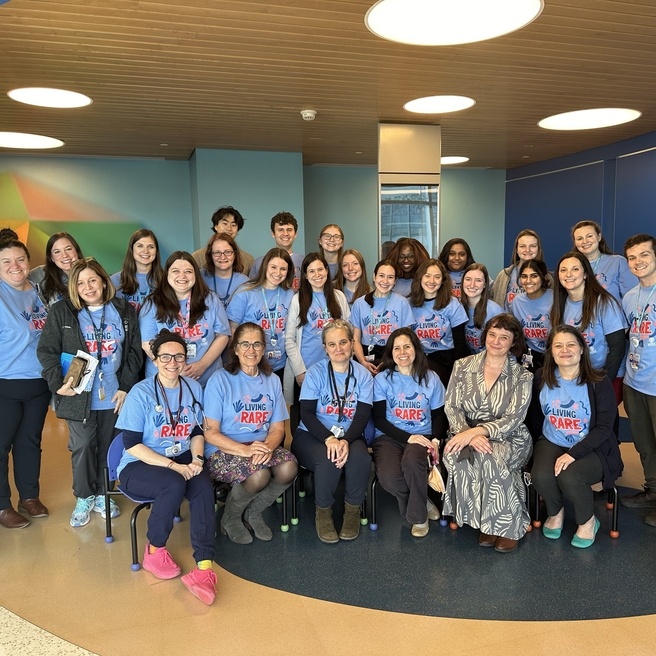What is MLC?
Megalencephalic leukoencephalopathy with subcortical cysts (MLC) is a rare genetic condition that affects how the brain grows and works. It is a type of leukodystrophy, a group of conditions that affect the white matter of the brain. These conditions damage the myelin sheath — the protective coating around nerve cells in the brain and spinal cord — which helps messages travel quickly between cells.
Causes of megalencephalic leukoencephalopathy with subcortical cysts
Most people with MLC are born with a change in the MLC1 or the HEPACAM gene. These genes help make proteins that allow brain cells to connect and communicate. In people with MLC, changes in the gene affect how much of the protein is made or how well it works, which leads to the symptoms below.
Signs and Symptoms of megalencephalic leukoencephalopathy with subcortical cysts
Symptoms of Megalencephalic leukoencephalopathy with subcortical cysts usually include:
- Unusually large head size (called macrocephaly)
- Slower development in skills like walking or talking
- Seizures
- Problems with movement that get worse over time
- Muscles that are either too loose or too tight
- Differences in thinking or learning
- Loss of skills that were previously learned (called developmental regression)
MLC affects each person differently. Some people may lose skills over time, while others stay the same or show improvement.
Testing and diagnosis
In addition to looking at physical symptoms, diagnosing MLC involves several tests:
- A brain MRI (magnetic resonance imaging) can show patterns in brain tissue that are typical of MLC.
- Genetic testing looks for changes in the genes linked to MLC. This test is done from a blood or saliva sample or a cheek swab. The results, along with other tests, can lead to a diagnosis of MLC.
Treatment for megalencephalic leukoencephalopathy with subcortical cysts
There is currently no cure for MLC, but there are treatments to help manage symptoms and keep children comfortable. Each child’s treatment plan is different based on their symptoms.
Some children with MLC need help with breathing. Others may need feeding therapy or special diets. Seizures can often be controlled with medication.
Children with MLC should also be monitored for:
- Feeding, growth and weight changes
- Bone issues, such as scoliosis, dislocated joints and low bone density, which are linked to motor issues in MLC
If any of these conditions are found, pediatric subspecialists can help treat them. Many children with MLC also benefit from physical, occupational and speech therapy to combat challenges caused by the disease.
Follow-up
Children with MLC need regular monitoring by neurologists, as well as ongoing therapy and coordinated care by other medical subspecialists as needed. At Children’s Hospital of Philadelphia (CHOP), families have access to advanced, multidisciplinary care, delivered by clinicians with deep expertise in leukodystrophies, all within a compassionate, family-centered environment.
Long-term outlook for children with MLC
MLC is often a progressive, life-limiting disease, with symptoms that worsen over time. However, there are treatments that can improve a child’s quality of life. CHOP is one of the premiere institutions for leukodystrophy care and a designated Center of Excellence. Our ongoing research efforts aim to enhance outcomes for children with MLC and offer families hope for the future of leukodystrophy care.
Resources to help
Leukodystrophy Center Resources
We have created resources to help you find answers to your questions and feel confident with the care you are providing your child.
Reviewed on 07/25/2025
